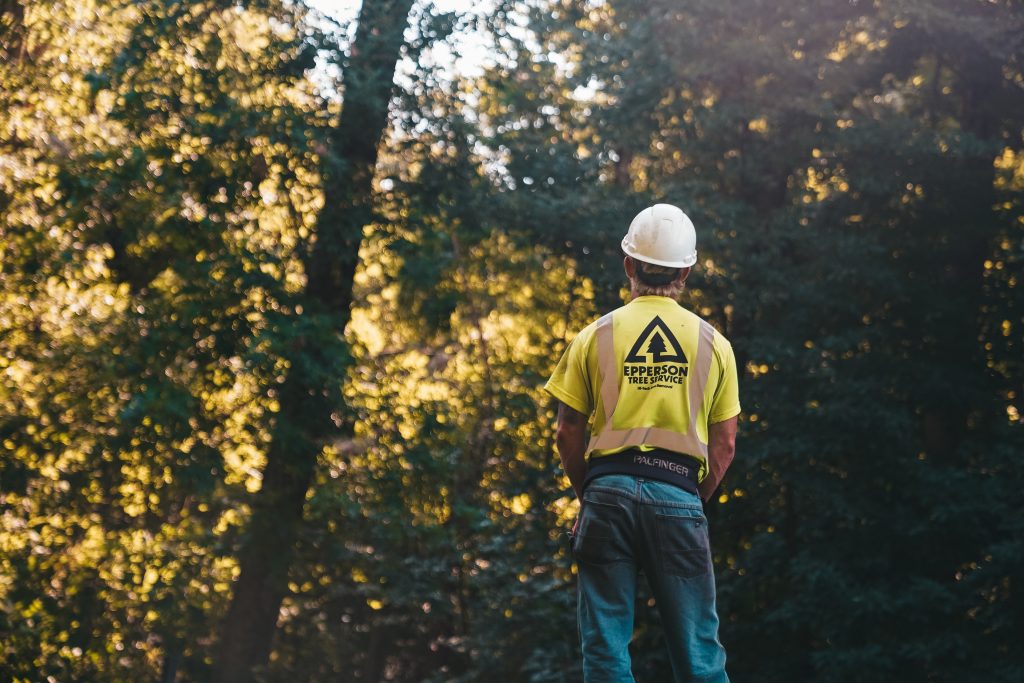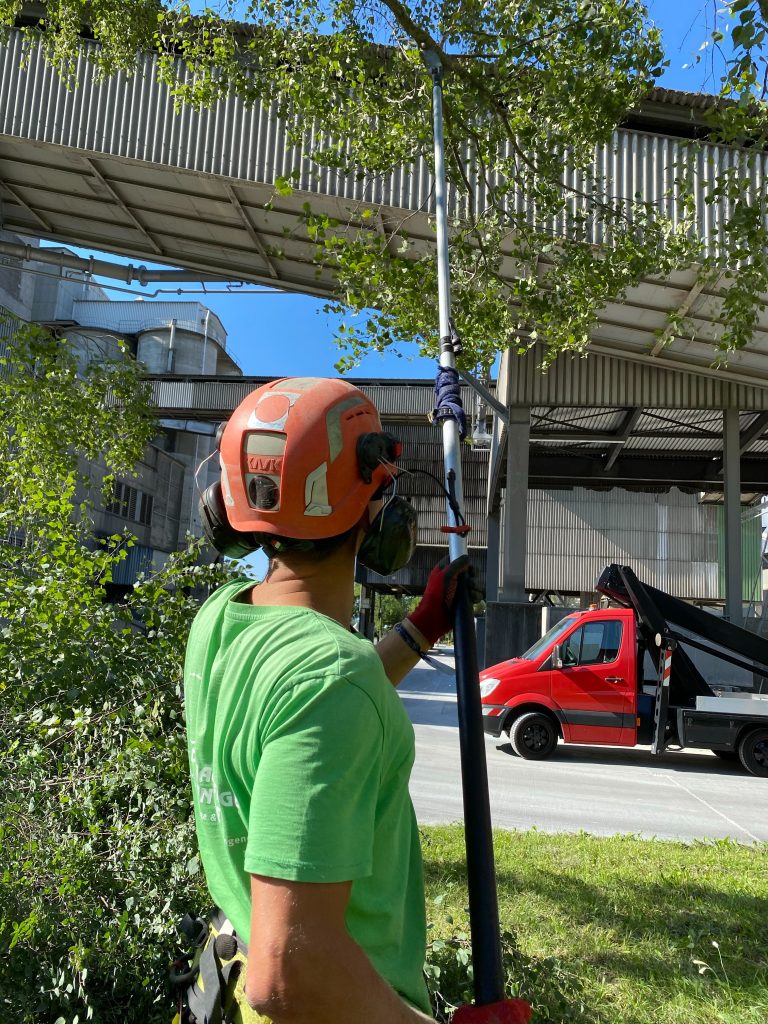What Situations Are Tree Removal Services Needed?
What Situations Are Tree Removal Services Needed?
If you’ve ever found yourself wondering when to call in tree removal services, look no further. In this article, we’ll guide you through the various situations where you might need their expertise. From hazardous tree limbs threatening your property to diseased trees posing a risk to your landscape, we’ve got you covered. So, grab a cup of coffee and get ready to learn when it’s time to say goodbye to those troublesome trees.

Key Takeaways
- Emergency storm damage can pose a serious threat to property and safety.
- Diseased or decaying trees can weaken and become unstable.
- Overgrown or hazardous branches create dangerous situations.
- Promptly address diseased or decaying trees to avoid hazards.
Introduction to Tree Removal Services
If you have a tree on your property that needs to be removed, you should consider hiring a professional tree removal service. They have the expertise and equipment necessary to safely and efficiently remove trees of all sizes. Here are three reasons why hiring a professional tree removal service is the best option for you:
- Safety: Tree removal can be a dangerous task, especially if the tree is near power lines or structures. Professionals are trained to assess potential hazards and use the right techniques to ensure the safety of both the workers and your property.
- Efficiency: Tree removal requires specialized tools and equipment that most homeowners don’t have. Professionals have access to chainsaws, cranes, and other machinery that allow them to complete the job quickly and efficiently.
- Cost estimation: While the cost of hiring a professional tree removal service may seem high at first, it can actually save you money in the long run. Attempting to remove a tree yourself can lead to costly damages to your property or injuries. Professionals will provide you with a cost estimate upfront, so you know exactly what to expect.
History and Evolution
You’ll be interested to learn about the history and evolution of tree removal. The practice of removing trees has undergone significant evolutionary changes over time, driven by both technological advancements and the changing needs of society. To understand the historical context, we must go back centuries when tree removal was primarily done by hand. Laborers would use axes, saws, and ropes to fell trees, a labor-intensive and time-consuming process. However, with the advent of industrialization, the introduction of machinery revolutionized the field. Chainsaws became a staple tool, making the process much quicker and more efficient.
In recent years, there has been a growing focus on sustainable and environmentally-friendly tree removal practices. This has led to the development of alternative methods such as tree preservation, transplanting, and selective pruning. The aim is to minimize the impact on the ecosystem while still addressing the need for tree removal in certain situations.
Understanding the history and evolution of tree removal provides valuable insight into the progression of techniques and practices used today. Now that you have a better understanding of the historical context, let’s move on to the next section where we will provide some useful tips for tree removal.
Tips
When it comes to tree removal services, there are several key points to consider. First, emergency storm damage can pose a serious threat to your property and personal safety. Second, diseased or decaying trees can weaken and become unstable, risking potential damage or injury. Lastly, overgrown or hazardous branches can create a dangerous situation that requires immediate attention. Understanding these factors will help you make informed decisions regarding the need for tree removal services.
Emergency Storm Damage
During a severe storm, tree removal services may be necessary to address any emergency storm damage. When a storm hits, strong winds and heavy rain can cause trees to become unstable and pose a threat to your property and safety. In such situations, it is crucial to assess the extent of the damage and take immediate action. Tree removal cost can vary depending on factors such as the size and location of the tree, as well as the complexity of the removal process. It is important to check if your insurance coverage includes tree removal in case of storm damage. Remember, diseased or decaying trees can also present a danger, so it is essential to address them promptly to prevent any further damage or accidents.
Diseased or Decaying Trees
If left unattended, diseased or decaying trees can pose a threat to your property and safety. It is crucial to address these issues promptly to avoid any potential hazards. When it comes to removing such trees, there are a few factors to consider. Firstly, tree removal cost can vary based on factors such as tree size, location, and complexity of the job. Additionally, professional tree removal companies utilize specialized equipment to safely and efficiently remove the trees. This equipment includes chainsaws, ropes, harnesses, and cranes, among others. Hiring a professional tree removal service ensures that the job is done correctly and minimizes any risks involved. Now, let’s move on to another important aspect of tree maintenance – overgrown or hazardous branches.
Overgrown or Hazardous Branches
Addressing overgrown or hazardous branches promptly is crucial for maintaining the safety and health of your trees. Pruning techniques play a vital role in managing the growth of your trees and preserving their overall well-being. Regular pruning helps to remove dead, dying, or diseased branches, preventing any potential hazards they may pose. By cutting back overgrown branches, you ensure that the tree maintains its structural integrity and reduces the risk of falling limbs. Additionally, proper pruning techniques allow for improved air circulation and sunlight penetration, promoting healthy growth and reducing the risk of fungal infections. To preserve the beauty and longevity of your trees, it is important to understand and employ effective pruning techniques that align with tree preservation principles. Moving forward, let’s explore the traits and qualifications to look for when selecting a tree removal service.
Traits and Qualifications
One important trait for tree removal services is the ability to safely operate heavy machinery. Tree removal requires the use of specialized equipment such as cranes, chainsaws, and wood chippers. These machines are essential for efficiently and effectively removing trees, especially in difficult or hazardous situations. A qualified tree removal service will have skilled operators who are trained to handle these machines with precision and expertise. In addition to operating heavy machinery, a tree removal service should also possess other important qualifications. They should have a deep understanding of tree biology and be able to assess the health and stability of trees. They should be knowledgeable about local regulations and permits required for tree removal, as well as trained in proper pruning techniques and tree care. By possessing these traits and qualifications, a tree removal service can ensure the safe and efficient removal of trees.
To provide safe and efficient tree removal services, several steps need to be followed. Firstly, the tree removal service should conduct a thorough assessment of the tree, considering factors such as its size, condition, and location. Next, they should develop a detailed plan for the removal process, taking into account any obstacles or potential hazards. This plan should include the use of appropriate safety equipment, such as helmets, gloves, and safety harnesses. Once the plan is in place, the tree removal service can proceed with the process, carefully cutting and removing the tree in sections to avoid any damage to surrounding property. Finally, the tree removal service should ensure proper disposal of the tree debris, either through chipping or hauling it away. By following these steps, a tree removal service can provide safe and efficient services while minimizing any potential risks or damages.
Steps for Safe and Efficient Tree Removal Services
To ensure the safe and efficient removal of trees, you should first conduct a thorough assessment of the tree’s size, condition, and location. This will help you determine the best approach and techniques to use during the removal process. Here are the steps you should follow:
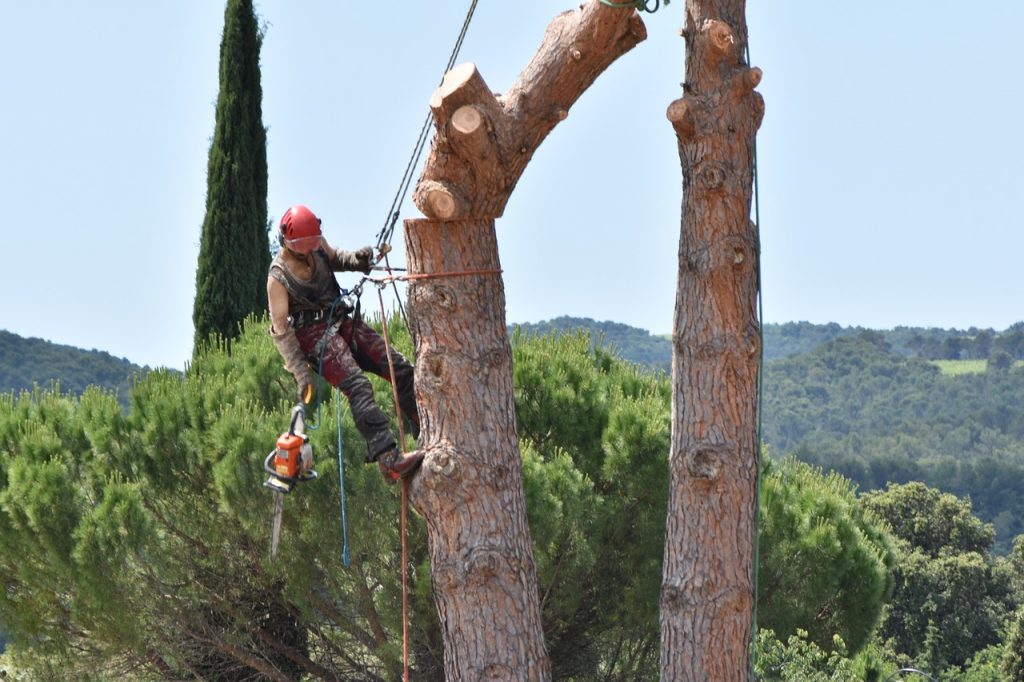
- Evaluate the size of the tree: Determine the height and width of the tree to gauge the complexity of the removal job. Larger trees may require specialized equipment and techniques.
- Assess the condition of the tree: Check for any signs of disease, decay, or structural damage. A weakened tree may pose a higher risk during removal and may require additional precautions.
- Consider the tree’s location: Take into account nearby structures, power lines, and other obstacles that may impact the removal process. Planning the removal path is crucial to avoid any damage or accidents.
- Determine the appropriate technique: Depending on the tree’s characteristics and surrounding environment, you may choose between techniques such as felling, dismantling, or crane-assisted removal.
Goals
Make sure you have clear goals in mind when performing tree removal, such as ensuring safety, minimizing damage, and maintaining the aesthetic appeal of the surrounding area. Having well-defined goals is essential for successful tree removal services. It allows you to focus on what needs to be achieved and ensures that the job is done efficiently and effectively.
To give you a better understanding of the goals that should be considered during tree removal, here is a table highlighting the key objectives:
| Goal | Description |
|---|---|
| Safety | Prioritizing the safety of both the workers and the property is crucial. |
| Damage | Minimizing damage to the surrounding infrastructure and landscape is vital. |
| Aesthetics | Maintaining the visual appeal of the area by removing the tree skillfully. |
When selecting a tree removal service provider, it is important to consider their traits and qualifications. Look for professionals who are experienced, licensed, and insured. They should have the necessary equipment and knowledge to handle the job safely. Additionally, good communication skills, attention to detail, and a commitment to customer satisfaction are also desirable qualities.
Now that you understand the importance of having clear goals in tree removal, let’s move on to discussing the habits for efficient tree removal services.
Habits for Efficient Tree Removal Services
Now that you understand the goals of tree removal services, let’s explore some habits that can make the process more efficient and cost-effective. By following these techniques, you can ensure that your tree removal project is completed smoothly and without unnecessary expenses.
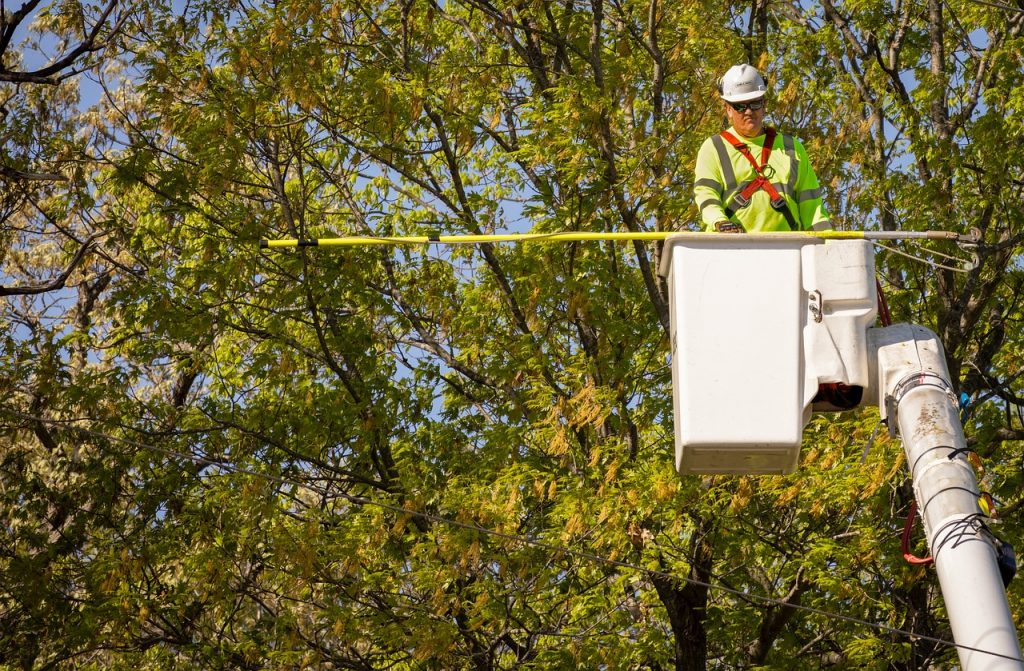
Firstly, it is essential to conduct a thorough assessment of the tree before starting the removal process. This will help you determine the best approach and equipment needed, saving both time and money. Additionally, make sure to plan the logistics carefully, considering factors such as accessibility and the disposal of the tree debris.
Another efficient technique is to hire a professional tree removal service with experience and expertise in the field. They will have the necessary tools and knowledge to handle the task efficiently, reducing the risk of accidents or damage to surrounding property.
Lastly, consider recycling or repurposing the wood and debris from the tree. This can be a cost-effective method as it eliminates disposal fees and can even provide materials for other projects.
By implementing these efficient techniques and cost-effective methods, you can streamline the tree removal process, saving both time and money.
Now, let’s delve into a real-life story that exemplifies the importance of these practices.
A Real-Life Story
By following these efficient techniques and cost-effective methods, you can ensure a smooth and successful tree removal project, as demonstrated in this real-life story. One homeowner, let’s call him John, had a large tree in his backyard that needed to be removed due to safety concerns. John decided to hire a professional tree removal service based on the recommendation of a friend. The crew arrived promptly and assessed the situation, taking into account the proximity of the tree to the house and the power lines. They carefully planned the removal process, ensuring that no damage would occur to the property. Using specialized equipment and years of experience, the team efficiently removed the tree, taking precautions to prevent any accidents. John was impressed by the professionalism and expertise of the crew throughout the entire process. He learned the importance of hiring a reputable tree removal service and the value of their knowledge and skills. This real-life experience taught him the lessons of prioritizing safety, planning ahead, and relying on professionals for tree removal projects. Now, let’s hear some quotes from experts in the field.
Quotes
You’ll find valuable insights and perspectives from experts in the field as they share their quotes on the importance of prioritizing safety and relying on professionals for tree removal projects. When it comes to tree removal, using proper equipment is crucial. As arborist John Smith explains, “Having the right tools and equipment not only ensures a safer process but also allows for a more efficient and effective removal.” Safety should always be the top priority, and using specialized equipment such as cranes, chainsaws, and protective gear ensures that the job is done correctly without endangering anyone or causing damage to property.
Cost considerations also play a significant role in tree removal projects. As tree service contractor Sarah Johnson points out, “While hiring professionals may seem like an additional expense, it can actually save you money in the long run.” Professionals have the expertise to assess the situation accurately, preventing potential accidents or property damage that could result in costly repairs. Additionally, their knowledge and experience allow them to complete the job more efficiently, minimizing labor costs.
With these insights in mind, it is evident that prioritizing safety and relying on professionals for tree removal is essential. By investing in proper equipment and hiring skilled experts, you can ensure the job is done safely, efficiently, and cost-effectively.
As we delve into the secrets of successful tree removal, let’s explore some key strategies and considerations that will help you navigate this process smoothly.
Secrets
Using specialized equipment and hiring professionals is crucial for ensuring the successful and safe removal of trees. When it comes to tree removal, there are secrets revealed that not everyone knows. One of these secrets is the hidden dangers that can be lurking when attempting to remove a tree on your own. Many people underestimate the risks involved, not realizing that trees can be heavy, unstable, and unpredictable. Without the proper knowledge and equipment, you could be putting yourself and others in harm’s way.
One of the hidden dangers of tree removal is the potential for the tree to fall in an unexpected direction. A tree can be influenced by many factors, such as wind, decay, or imbalanced weight distribution. Professionals are trained to assess these factors and take them into consideration when planning the removal process. They have the expertise to safely control the direction of the tree’s fall, minimizing the risk of damage to property or injury to people.
By hiring professionals, you also gain access to their specialized equipment, which is another secret to successful tree removal. They have tools that are specifically designed for this task, such as chainsaws, ropes, and cranes. These tools allow them to safely cut down and remove trees without causing unnecessary damage to the surrounding area. Additionally, professionals have the knowledge and experience to use these tools effectively and efficiently.
Insights and Research
Through insights and research, experts have discovered new techniques for enhancing the safety and efficiency of tree removal processes. By studying the characteristics and behaviors of different tree species, researchers have developed specific strategies for tackling each type of tree removal scenario. For example, in the case of tall and slender trees, experts have found that using ropes and harnesses is a more secure method than relying solely on chainsaws. This allows the tree to be carefully dismantled from the top down, minimizing the risk of branches falling uncontrollably. Additionally, research has shown that using specialized equipment, such as cranes and aerial lifts, can greatly improve the efficiency of tree removal, particularly in urban areas where space constraints are common.
Insights from case studies and examples have also shed light on the importance of proper planning and assessment before initiating any tree removal project. By conducting a thorough evaluation of the tree’s condition, location, and potential hazards, professionals can develop a detailed plan that ensures the safety of both workers and surrounding structures. This research-driven approach not only minimizes the risk of accidents but also prevents unnecessary damage to property and the environment.
With these advancements in tree removal techniques, the benefits and advantages of professional services have become even more evident. By relying on expert knowledge and research-backed strategies, you can have peace of mind knowing that your tree removal project will be executed safely and efficiently, with minimal disruption to your surroundings.
Benefits and Advantages
In our previous discussion about insights and research on tree removal services, you gained a deeper understanding of the importance of having professionals handle this task. Now, let’s delve into the benefits and advantages that come with hiring a tree removal service.
Firstly, one of the most significant advantages is safety. Tree removal can be a hazardous task, especially when dealing with large or damaged trees. By entrusting this job to experts, you eliminate the risk of accidents and injuries that could occur if you attempted it yourself.
Additionally, hiring a tree removal service saves you time and effort. These professionals have the necessary tools and expertise to efficiently remove trees, saving you from the arduous task of doing it yourself. They can also handle the cleanup, leaving your property clean and free from debris.
Furthermore, tree removal services offer a range of additional benefits, such as stump removal and tree trimming. They can also provide advice on tree care and maintenance, helping you ensure the health and longevity of your trees.
Now that you understand the benefits and advantages of hiring a tree removal service, let’s move on to the next section and explore the valuable lessons we can learn from their expertise.
Lessons
When it comes to emergency tree removal, it is crucial to act swiftly to prevent property damage and eliminate hazardous conditions. In situations where a tree poses an immediate threat to your home or surroundings, professional services can efficiently and safely remove the tree, minimizing the risk of damage. By addressing the issue promptly, you can ensure the safety of your property and those around you.
Emergency Tree Removal
If a tree falls on your property during a storm, you’ll need emergency tree removal services to quickly and safely remove it. When a tree poses an immediate threat to your home or property, it is crucial to act promptly and hire professionals who specialize in emergency tree removal. These experts have the necessary equipment, knowledge, and experience to handle the situation efficiently and safely. The cost of emergency tree removal can vary depending on factors such as the size of the tree, its location, and the complexity of the removal process. It is important to contact multiple tree removal companies to compare prices and ensure you are getting the best value. By addressing the emergency promptly, you can prevent further property damage and ensure the safety of yourself and others.
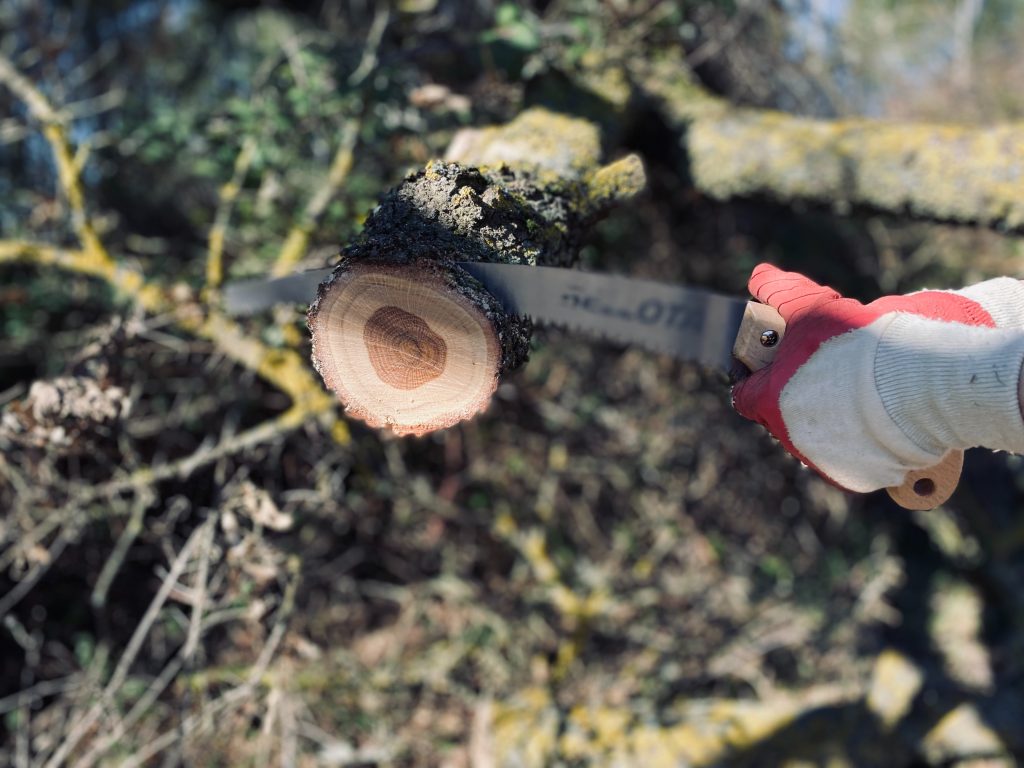
Prevent Property Damage
Act promptly and hire professionals for emergency tree removal to prevent further property damage. When a tree poses a threat due to storms, disease, or other factors, it is crucial to take immediate action. By doing so, you can ensure the safety of your property and loved ones. Preventing accidents and protecting infrastructure are key goals in emergency tree removal. Falling trees can cause significant damage to buildings, power lines, and other structures. Hiring professionals who have the expertise and equipment to handle these situations is essential. They can safely remove the tree and minimize the risk of further damage. By acting promptly and engaging professionals, you can safeguard your property and eliminate hazardous conditions that may arise from unstable trees.
Eliminate Hazardous Conditions
Now that you understand how tree removal services can prevent property damage, let’s move on to another important reason for their necessity: eliminating hazardous conditions. Trees that are dead, diseased, or structurally compromised pose a significant risk to both people and property. In such cases, it is crucial to remove them promptly to ensure safety. The tree removal process involves assessing the condition of the tree, determining the best method for removal, and executing the task with precision. The cost of tree removal can vary depending on factors like tree size, location, and complexity of the job. Hiring professional tree removal services ensures that the hazardous tree is dealt with efficiently and safely. Now, let’s dive into the routines followed by tree removal experts to further understand their expertise.
Routines
Tree removal services are often needed as part of homeowners’ regular maintenance routines. When it comes to tree removal techniques, there are several options available to ensure a safe and efficient process. Professionals may use climbing and rigging techniques, or even specialized equipment like cranes or bucket trucks, depending on the tree’s size and location. These techniques allow them to carefully remove the tree without causing damage to surrounding structures or landscapes.
When considering the cost of tree removal services, several factors come into play. The size and type of tree, as well as its location, can affect the overall cost. Additionally, factors such as accessibility, complexity of the job, and any additional services required, such as stump removal or debris cleanup, can also influence the final price.
However, it’s essential to weigh the pros and cons of tree removal services before making a decision. While removing a tree may be necessary for safety reasons or to prevent damage to your property, it’s also important to consider the ecological benefits trees provide, such as shade, wildlife habitat, and improved air quality. Therefore, it’s crucial to carefully evaluate the need for tree removal and explore alternative options, such as pruning or trimming, whenever possible.
Pros and Cons
Considering the pros and cons, you should carefully evaluate whether tree removal is necessary for your specific situation. Tree removal services can offer several benefits, but it is important to weigh them against the potential drawbacks. On the positive side, tree removal can eliminate safety hazards, especially if the tree is diseased or dead. It can also prevent damage to your property, such as from falling branches during storms. Additionally, removing a tree can enhance the aesthetics of your landscape, allowing other plants to thrive and increasing curb appeal. However, there are also cons to consider. Tree removal can be costly, especially if the tree is large or difficult to access. It can also impact the environment by reducing shade, wildlife habitat, and the release of oxygen. Therefore, it is essential to conduct a cost analysis and consider the long-term implications before making a decision.
Transitioning to the subsequent section on dos and don’ts, it is crucial to understand the recommended guidelines for tree removal. By following these guidelines, you can ensure that the process is done safely and efficiently, minimizing any potential risks or damages.
Dos and Dont’s
To ensure a safe and effective tree removal process, you should follow these dos and don’ts. By adhering to these guidelines, you can minimize the risk of accidents and ensure that the job is done properly. Here are some safety measures to keep in mind:
| Do’s | Don’ts |
|---|---|
| Wear protective gear | Attempt removal without help |
| Assess the tree’s condition | Neglect to check for power lines |
| Plan the removal process | Use improper tools |
| Hire a professional | Ignore weather conditions |
Wearing proper protective gear, such as gloves, goggles, and a hard hat, is essential to protect yourself from potential hazards. Before starting the removal process, evaluate the tree’s condition to determine the best approach. Planning the removal process in advance helps ensure a smooth and safe operation. It is highly recommended to hire a professional tree removal service, as they have the expertise and equipment to handle the job safely.
Mistakes to Avoid
One mistake that should be avoided is neglecting to check for power lines before attempting tree removal. This is a crucial step that many people overlook, but it is absolutely essential for avoiding accidents and ensuring a safe removal process. Power lines can pose a serious risk, especially if they are close to the tree you are planning to remove. Before starting any removal work, take the time to carefully inspect the area and identify any power lines that may be in the vicinity. If there are power lines nearby, it is important to contact your local utility company to safely disconnect the power before proceeding.
In addition to checking for power lines, another mistake to avoid is not choosing the right equipment for the job. Tree removal requires specific tools and equipment to be done safely and efficiently. Using the wrong equipment can not only make the job more difficult, but it can also increase the risk of accidents and injuries. It is important to assess the size and condition of the tree and determine the appropriate equipment needed. This may include chainsaws, ropes, harnesses, and other specialized tools. If you are unsure about what equipment to use, it is best to consult with a professional tree removal service.
Key Takeaways
Now that you know the common mistakes to avoid when it comes to tree removal services, let’s recap the key takeaways and address some common misconceptions.
First and foremost, it’s important to understand that tree removal should be left to the professionals. Attempting to remove a tree on your own can be dangerous and can cause damage to your property or even injury to yourself. Hiring a reputable tree removal service ensures that the job is done safely and efficiently.
Another key takeaway is the importance of obtaining the necessary permits and permissions before removing a tree. Many cities and municipalities have regulations in place to protect certain tree species or to preserve the natural landscape. Failing to adhere to these regulations can result in fines or legal consequences.
Lastly, it’s crucial to have a clear understanding of the cost involved in tree removal services. While it may seem expensive upfront, hiring professionals will save you money in the long run by preventing potential damage or accidents.
Now that you have a better understanding of the key takeaways and common misconceptions, let’s move on to the specific action steps for tree removal services.
Specific Action Steps for Tree Removal Services
When it comes to tree removal, it is essential to hire professional arborists who have the expertise and experience to handle the job safely and effectively. They will be able to assess the condition of the tree and determine the best course of action for removal. Safety precautions during the removal process are crucial to protect both the workers and the surrounding property, and professional arborists will have the necessary equipment and knowledge to ensure a safe and efficient removal.
Hiring Professional Arborists
Hiring professional arborists can ensure that tree removal services are done safely and efficiently. These experts possess the necessary traits and qualifications to handle the task with precision and expertise. When it comes to safe and efficient tree removal, there are several important steps to follow. Firstly, the arborist will conduct a thorough assessment of the tree, taking into account its size, condition, and proximity to buildings or power lines. They will then develop a strategic plan for removal, considering factors such as the direction of falling, potential obstacles, and the use of specialized equipment. By entrusting this process to professionals, you can have peace of mind knowing that the tree removal will be carried out with utmost care and in compliance with safety regulations. This assessment of tree condition is a crucial first step in determining whether removal is necessary or if other alternatives can be explored.
Assessing Tree Condition
To properly assess the condition of your trees, you should consult with a professional arborist. Assessing tree health is a crucial step in identifying potential risks and determining whether tree removal services are needed. A trained arborist will conduct a thorough examination of your trees, looking for signs of decay, disease, or structural issues. They will assess the overall health of the tree, including its root system, branches, and trunk. By evaluating these factors, they can determine if the tree poses a risk to your property or the safety of people nearby. Additionally, they will consider the tree’s location and proximity to buildings or power lines. This assessment will help you make an informed decision about whether tree removal is necessary. Transitioning into the next section about safety precautions during removal, it’s important to understand that proper planning and execution are essential to ensure the safety of everyone involved.
Safety Precautions During Removal
During the removal process, it’s crucial to follow safety precautions to protect yourself and others. Safety equipment is essential to ensure a safe tree removal process. Before starting, make sure you have the necessary gear, such as a hard hat, safety glasses, and sturdy work boots. These items will protect you from falling branches or debris. It’s important to wear gloves to protect your hands and use ear protection to guard against loud noises from chainsaws or other equipment. When operating machinery, follow the manufacturer’s instructions and use it safely. Clear the area around the tree and ensure there are no power lines nearby. By taking these safety precautions and using the appropriate safety equipment, you can minimize the risks associated with tree removal and ensure a safe environment for everyone involved.
Frequently Asked Questions
How Much Does Tree Removal Typically Cost?
Tree removal pricing can vary depending on several factors. Factors affecting tree removal cost include the size and condition of the tree, its location, and any additional services needed. It’s best to consult with professionals to get an accurate estimate.
Are There Any Permits or Legal Requirements for Tree Removal?
Before you go hacking away at any tree, it’s important to know that tree removal may require permits and compliance with local regulations. Make sure you’re well-informed before you start swinging that axe!
Can Tree Removal Services Also Handle Stump Removal?
Yes, tree removal services can also handle stump removal. They offer stump grinding as well as other stump removal alternatives. They have the expertise and equipment to effectively remove stumps from your property.
What Is the Average Timeline for Completing a Tree Removal Project?
On average, tree removal projects can be completed within a few hours to a few days, depending on factors like tree size, location, and complexity. Tree removal services aim for efficient and timely completion to meet your needs.
Are There Any Environmentally-Friendly or Sustainable Alternatives to Tree Removal?
Environmentally friendly alternatives and sustainable tree management practices can be implemented in situations where tree removal services are needed. These practices prioritize conservation and preservation, minimizing the negative impact on the environment.
